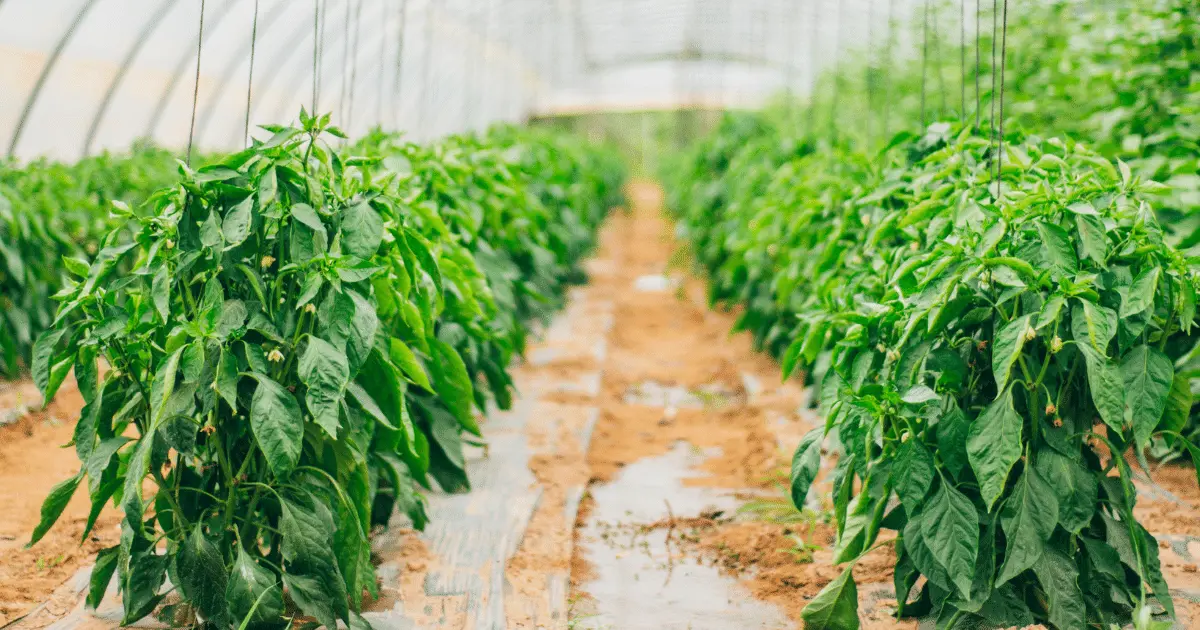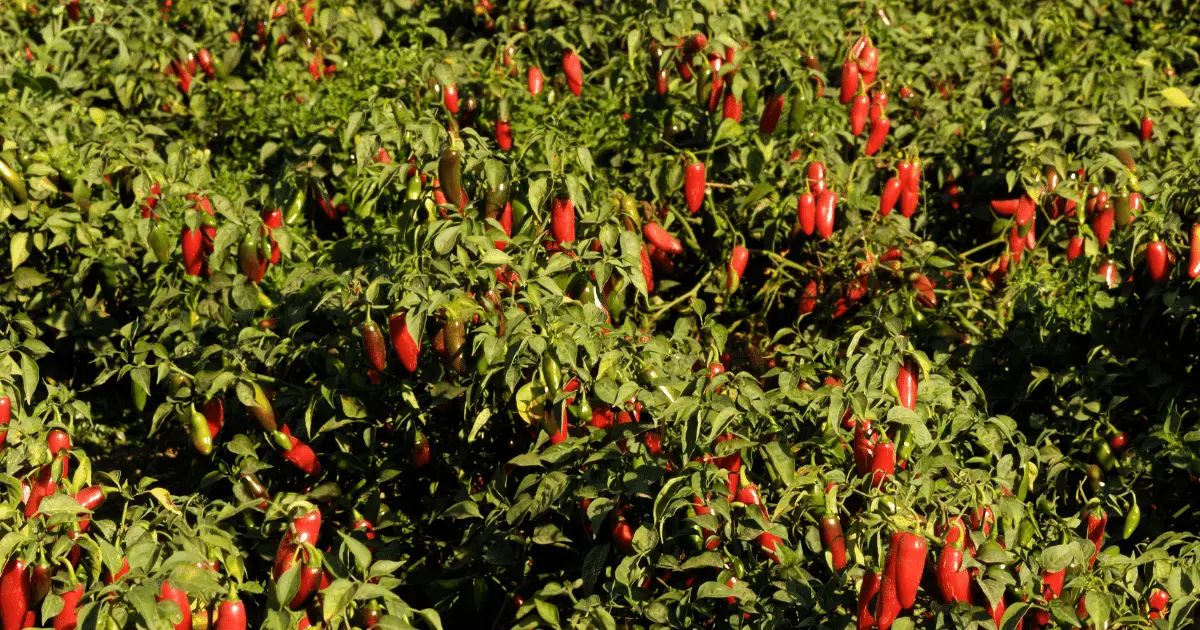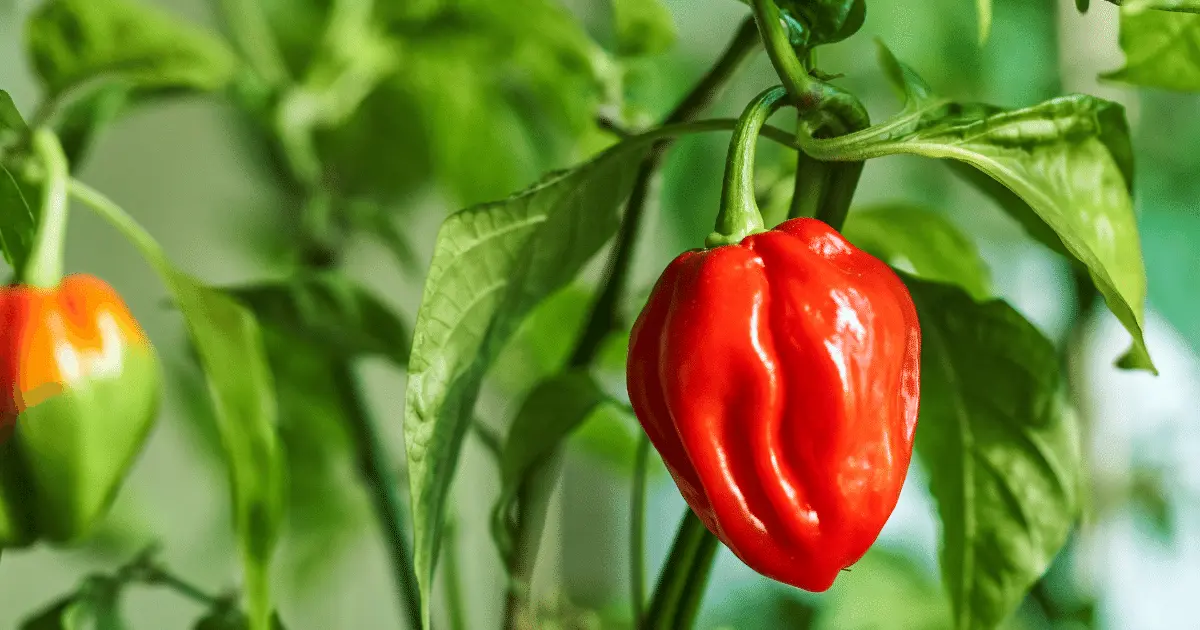Westerners are not exactly known for their love of spicy foods. However, continents such as Africa and India use pepper voraciously in their cooking. If you love to add pepper to your food and want to plant it, it is important to know how to space them well. There are different peppers, ranging from sweet to very hot!
One thing to note when growing peppers, is the fact that peppers must be well-spaced if you plan on getting the best result during your pepper harvest season. Also, spacing your plant right will ensure they do not fall prey to fungal diseases such as mildew. What is the correct way to space pepper? Find out as you read further.
How Far Apart to Space Pepper Plants

The different varieties of pepper are spaced differently, and I’ll show you the spacing for the most common types of pepper. There are three ways to grow your pepper. You can grow them in a container, raised bed, or rows in-ground. When you plant a seed in-ground rows, you must leave enough space to walk when harvesting the peppers. If you do not leave space in the rows, you may end up stepping on and killing your peppers.
If you are planting using raised beds, you may plant in grids. Planting in raised beds allows you to fit many plants in a single bed. Plant your pepper in raised beds, spacing them 18-24 inches apart.
Peppers can also be planted in containers and make excellent container plants. If you want to use this method, ensure that you use a container with enough space( at least 8 inches). Depending on the size of the container, you may choose to plant one or two peppers. Below is my advice on how to space different pepper varieties.
Jalapeño Pepper Spacing

Jalapeño peppers are very popular. They are known for being very spicy, and when used in large quantities, only the brave can eat jalapeños. When added to food, the Jalapeño Pepper is green in color, and when used in food, they provide a kick to the taste. The Jalapeños pepper can grow to one to three feet tall, and one plant of its seed can yield several peppers.
If you are planting jalapeños, the right spacing is 12 to 18 inches apart. To grow these green peppers in a pot, you should use a container holding at least five gallons of potting mix.
Bell Pepper Spacing

Bell pepper is a sweet kind of pepper. Sweet peppers are known for growing taller than their hotter counterparts, such as the bell pepper. Bell peppers typically grow to be 3.5 feet tall and 15 to 18 inches wide. If you are spacing the bell pepper, the right spacing should be 18 inches apart, and the rows should be 30 to 36 inches apart. If you wish to plant them in a container, choose a container that can hold at least five gallons of soil.
Habanero Pepper Spacing

In terms of being hot, habanero peppers are the king. Hot peppers like the habanero can grow to become large. When the climate conditions are warm, the habanero pepper can grow to 4 to 5 feet tall. The plants produced from their seeds are more than the ones produced from Jalapeños and Cayenne pepper seeds. When you consider how large these plants grow, giving them a bit of space is a good idea. I recommend giving your habanero peppers a space of 18 to 24 inches. If you choose to grow your habanero pepper in a container, you should use a container holding five gallons of potting mix. Also, ensure that you put holes in your container if it is a bucket.
Cayenne Pepper Plant Spacing
Cayenne peppers are awesome, and they are very popular, and I use them greatly in my kitchen. Just like Jalapeños, cayenne peppers usually grow about three feet tall. You can plant the cayenne pepper in a grid style or rows (whatever suits you). The spacing between each should be 12 to 18 inches. Like other pepper varieties, when planting the cayenne pepper in a container, use a container that can hold 3 to 5 gallons of growth medium.
Can Pepper Be Staked?
Just like zucchini and tomatoes, pepper plants can be staked. I advise you to stake your pepper as soon as they are planted. You can stake them using a tomato cage or trellis. Also, note that the branches and pepper plants aren’t very strong, so they may get damaged if exposed to very high winds. If you want your pepper to grow vertically, you should stake them as soon as they are planted.
Why You Need To Space Your Pepper Plant Appropriately
The next paragraph will explain why spacing your pepper plant is a good idea.
1. Spacing Increases Yield
You want your plants to be far from one another for sunshine, water, and nutrients. This is because competition can impact output in addition to insect issues and plant illnesses.
To grow strong, robust plants, peppers require a minimum of 8 hours of sunlight each day. Large plants can only develop in areas that are densely populated with light. Plants with a long maturity period need optimum conditions and appropriate spacing to develop their fruits in a short-season environment.
Additionally, pepper plants require regular access to nutrients and water. If there has been no rain, you should thoroughly water the pepper plants in your garden beds once a week. Peppers planted in containers require two to three waterings since they dry out more quickly than garden plants.
2. Appropriate Spacing Increases Productivity
You’ve probably learned that you should only plant your peppers close to each other. But did you know that planting your peppers too far apart can also affect plant productivity? When you leave a space between your plants, you give weeds space to grow. When you space your plants appropriately, they will, in turn, shade the soil, preventing any unwanted weed growth.
3. Appropriate Spacing Increases Plant Health
Your pepper plant will be forever grateful to you when you space them well. This is because you won’t only prevent weed growth or increase yield, but you will also keep them healthy.
Expect yield to be impacted when pests or plant diseases assault plants. Peppers will also encroach on their neighbors if planted too close together. Because of the decreased airflow around the plants, the foliage won’t dry out as quickly after rain or irrigation. A disease’s invitation is wet foliage. Speaking of plant diseases, did you know you can revive a dying tomato plant? Skills such as reviving dying plants iis a must-have for every gardener.
